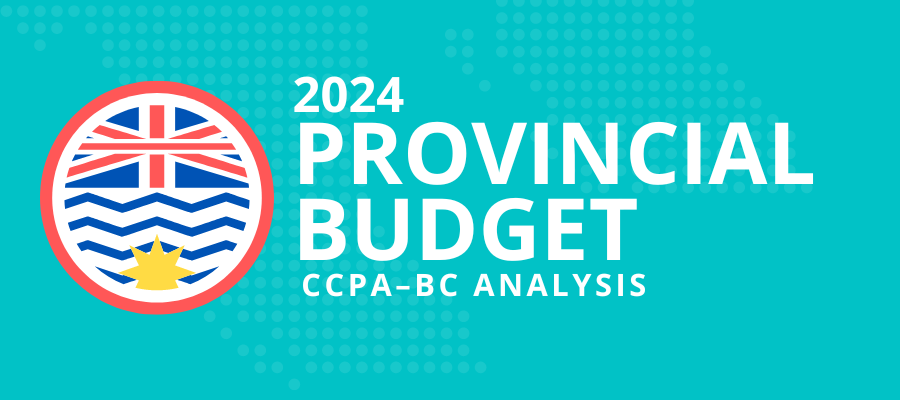Challenges persist: Community-based mental health in BC

In 2006, I wrote the report, “Community Based Mental Health in BC: Changes to Income, Employment and Housing Supports” to explain policy changes that had occurred with a new government and to look at their impact on community-based mental health services. In 2001 the Liberals came into power in BC after ten years of an NDP government and made some of the deepest cuts to social programs in Canada’s history alongside sweeping policy changes which dramatically altered the social policy landscape
To set the stage, before the Liberals came to power, BC was seen as one of the leading provinces in Canada in mental health care reform and in the development of recovery models of care for people experiencing mental illness. In a Canadian first, the NDP established a provincial Mental Health Advocate and allocated a protected envelope of funds for mental health within the overall health budget.
Although it might be hard to imagine now, back in 2006 mental health was just gaining momentum on the political radar. The Kirby Senate report, Out of the Shadows At Last: Transforming Mental Health, Mental Illness and Addiction Services in Canada, had just been released, raising awareness about the dire state of mental health services across the country. In 2007, the Mental Health Commission of Canada (the key Federal response to the Kirby report) was launched. Public awareness of mental health reforms were not very developed at that time, and by supporting research into the BC context on the impact of policy changes on mental health, the CCPA-BC helped to break ground in this area. The Kirby report had piqued people’s interest, which might account for the popularity of the CCPA report.
Policy changes but no improvements
In brief, the study found that the negative impacts of the Liberal government’s cuts and policy changes outweighed any positive developments, including the Premier’s task force on mental health and addictions, slight raises in income assistance rates and earnings exemptions for people with disabilities and some new housing units.
The few employment supports geared specifically to people with mental illness were being eroded.
The study findings highlighted the lack of empirical data on people with mental illness who are homeless or under-housed and revealed that available housing was often inadequate and unsafe and wait times to gain access unacceptably long. Additionally, changes to eligibility criteria and the complexity of applying for disability benefits made it virtually impossible for people to apply for assistance without advocate support.
The study also showed that the few employment supports geared specifically to people with mental illness were being eroded in favour of generic supports, which had a devastating impact on people with mental illness struggling to get back into the workforce.
Finally, advocacy mechanisms to meaningfully involve people with lived experience of mental illness in treatment decision making and policy development were badly eroded. Some of the issues highlighted in the report existed before the Liberal cuts and changes (the lack of adequate housing and poor levels of income assistance), however, the overall sense was that the hope generated by the NDP for a more comprehensive and integrated community-based mental health care system was lost.
Where we are now
Comparing then and now, much has changed and much has remained the same.
Unlike the relative political indifference around mental health in 2006, in BC’s May election all the main parties had well-developed platforms on mental health. Cynically, this rise in interest in mental health is likely due to the ravages of the opioid crisis and the ongoing lack of coordinated response both provincially and federally to the astonishingly high and unacceptable death rates.
It is widely recognized that without housing, people’s mental health problems worsen.
In BC, the provincial government has seen the importance of bringing together mental health and addictions under one ministerial jurisdiction, and this undoubtedly has raised awareness about substance use as a public health issue. The establishment of the Mental Health Commission of Canada has meant more cross-Canada consultations and development of a federal mental health strategy and guidelines for recovery based mental health care systems.
There is more attention to the issue of homelessness through the Commission’s funding of the National At Home/Chez Soi project, which has generated more evidence of the extent to which people with mental illness live in poverty and are homeless. However, federal funding for housing is tied to research and not to development of specialized mental health and social housing, which requires ongoing sustainable provincial and territorial funding. This is indicative of the extent to which both federal and provincial governments are willing to let their most vulnerable citizens’ housing needs be met primarily by private market housing.
This national project helped develop the evidence base for the necessary specialized supports for people struggling with mental health problems. These supports (such as interdisciplinary Assertive Community Treatment teams called ACT) have been largely implemented without ‘housing first’ and it is widely recognized that without housing, people’s mental health problems worsen. Other problems include that programs like ACT function mostly to monitor people’s compliance to their psychiatric medication regimes, and the inclusion of police officers on some teams in Vancouver and Victoria adds an unnecessary coercive element to treatment.
With the official closure of the provincial Riverview Psychiatric Hospital in 2012, the site and its use continues to be a flashpoint for discussions about how best to support people with the most chronic and severe mental health problems. Indeed, support for reopening programs and beds at Riverview grew while successive Liberal governments ignored or severely hampered further development of community-based mental health care that provides people with a range of care options, support to re-enter the workforce and social connections. BC’s new minority NDP government, supported by the Green Party, would do well to dedicate more resources to community-based supports and to develop mechanisms for more integrated systems of mental health care.
Awareness of mental health and addictions as key public health issues in BC has been a double-edged sword.
Awareness of mental health and addictions as key public health issues in BC has been a double-edged sword. Understanding mental health and addictions through a health lensand not as moral failures has gone a long way to destigmatizing the issues. However, positioning mental health and addictions as health issues can serve to distance the problems from some of their social origins. Thus, we now have more specialized housing for people with mental health and addictions issues, but social assistance rates have not changed since 2007, meaning homelessness and poverty particularly among marginalized groups has continued virtually unabated.
The good news is that in the face of the opioid crisis and with a new federal government, evidence based harm reduction programs like safe injection sites, the wide distribution of naloxone kits and using peer training models have expanded.
Going forward
With a new minority government in BC, it remains to be seen whether much-needed attention to mental health will be achieved through the establishment of a Ministry of Mental Health and Addictions. The NDP and Green Party promised to increase income assistance payments and establish a housing action plan in order to reduce poverty and homelessness. Despite the political pledges to date, the promise of a fully integrated mental health and addictions system that improves access and addresses both the biological and social determinants of mental health is still a long way from being realized.
Topics: Health care, Housing & homelessness, Poverty, inequality & welfare


